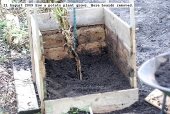I think it's great you're interested in what your yield per plant is.
It's going to be very interesting to see how it changes over the years. Soil quality, varieties, weather, temperatures, timing, &c. they all have a big effect on yield. The location also makes a significant difference, not just where in the world you are, but even within the same city.
Where I am now, potato volunteers start about a month later than when I lived in town (a bit over 10 kilometers away), so I adjust my planting times accordingly. In town I could get two or three potato harvests a year, on the farm, I get one. Same variety has drastically different yields depending if I plant them in the valley on the farm, or near the house, or with the mangelwurzels. I've given up measuring yield per plant and focus more on larger themes and what effects they have on the overall harvest. If I leave the roots whole, I'll often get a larger yield per plant, then if I cut them up into individual eyes - or two eyes which is my preference. But planting the potatoes whole gives me less yield overall than I do cutting them up before planting.
So you see, there are many variables. But what you're doing is great because you can see what it is like in YOUR conditions. This kind of observation is the foundation of permaculture. Looking, measuring, observing, trying new things and seeing what's relevant to your location. I think it's marvelous.
However, if you do want to know more about yields, varieties, &c,
Carol Deppe's Resilient Gardener is a fantastic resource. She waxes poetic about potatoes for a good chunk of the book. If memory serves, there's a bit about yield per plant in there too.







